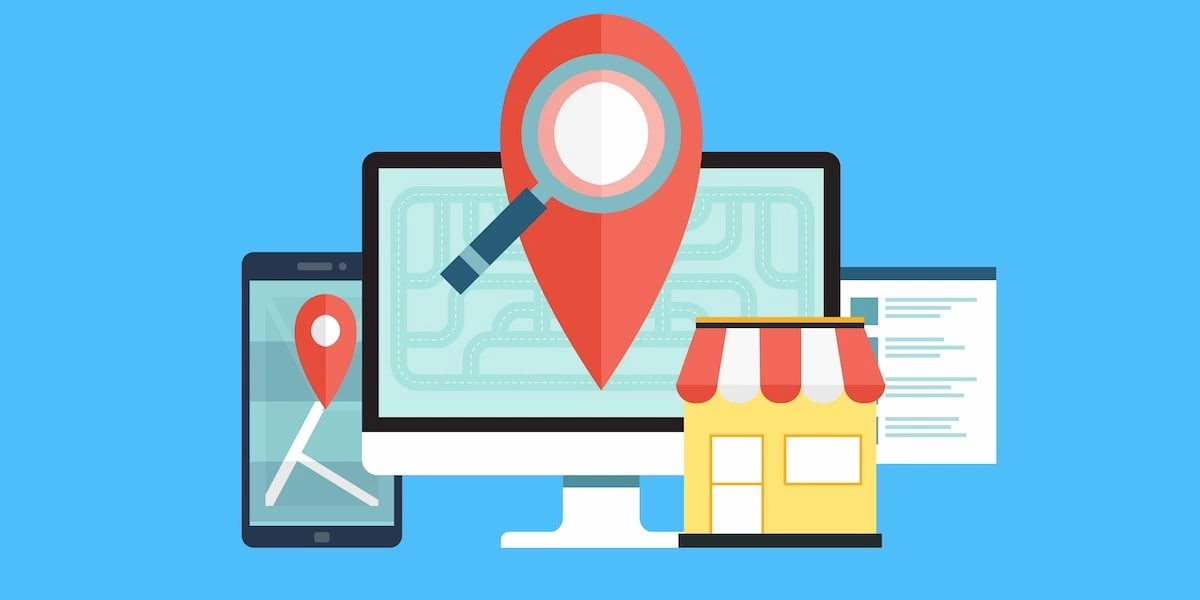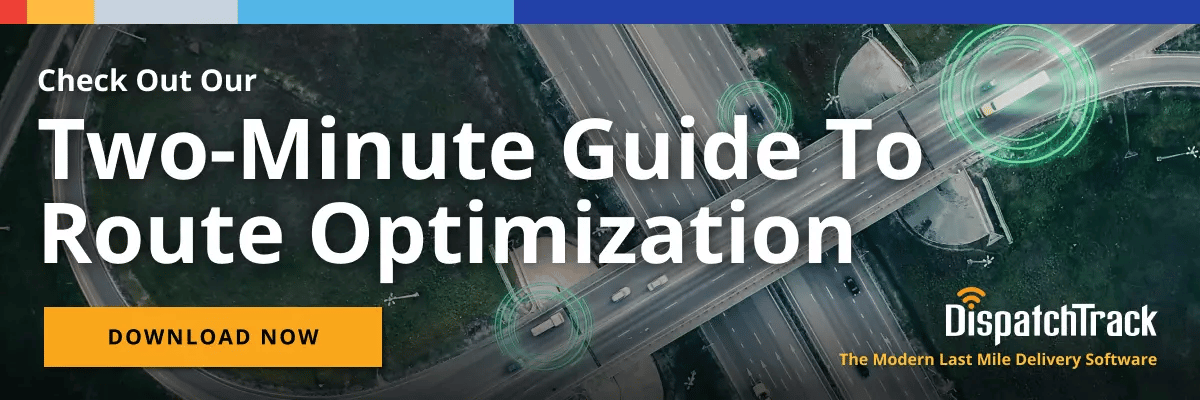It takes a lot of effort to plan a delivery route. And when you don't have the right tools, it's nearly impossible to plan dozens or hundreds of delivery routes efficiently. Manual route planning takes many hours. Even when done correctly, it can’t guarantee optimal and efficient routes.

But when you have the right processes and technology, everything changes. You can create routes that minimize drive time, maximize capacity usage, and ensure on-time delivery. The trick is taking the right approach to route optimization.
Route Optimization Meaning
At its simplest, route optimization is all about trying to find the best route. You want to he most efficient and cost-effective route to deliver orders as fast as possible within your given constraints.
The process goes beyond merely finding the shortest distance between two delivery drop-off locations. It's geared toward reducing mileage and ensuring optimal capacity usage. To do so, you need to take into account a number of variables, including:
- Delivery time windows
- Vehicle type
- Driver schedules
- Distances between each stop
- The locations of the hubs and warehouses
- Vehicle load capacity in weight or volume
- Traffic congestion
- Driver speed and skill sets
- Service times for different delivery types.
Simply put, it would be virtually impossible to efficiently account for all these variables by hand.
Instead, you can compute the best routes in seconds with route optimization software. This increases the number of deliveries delivery drivers can complete each day and saves huge amounts of back-office time.

The Importance of Route Optimization Software
For small delivery businesses with just one or two vehicles, manual route planning might be doable. Though it does come with a risk of human error. If you have more vehicles than that, the process becomes much more challenging. As you add more routes and stops, it takes the time it takes to figure out routes multiplies.
On the other hand, a route optimization app can do the work for you. How? By calculating every possible route for you within a short period.
Apps such as Waze, Google Maps, and similar navigators aren't the solution either. These apps are designed to provide simple point-to-point directions. They're not built for complicated multi-stop routes that consider a variety of factors and constraints.
You can't plan daily delivery routes involving hundreds of destinations without the right tools. You need something can handle complex constraints and integrate with other enterprise systems.
The Benefits of Route Optimization Software for Fleet Productivity and Efficiency
Now we can talk a little bit more concretely about its uses and benefits. Simply put, you can increase efficiency in your business by using the right route planning software. It lowers operating costs, saves you time, and ultimately increases revenue.
Here are a few of the ways it does that:
Delivery route execution
An efficient route planner takes into account multiple factors such as location, time, vehicle capacity, and traffic patterns. But even the best plans come with some uncertainty. You need the ability to adjust routes quickly and keep drivers informed.
That’s why smart route optimization software generates a visual representation of delivery routes, showing dispatchers, fleet managers, and drivers where deliveries are going, who will be making specific deliveries, and what updates need to be made due to real-time traffic conditions. When you’re able to visualize your routes as they’re unfolding, you can be more agile and flexible.
Auto dispatching
Route optimization software eliminates the need to print out and hand off paper maps and manifests to drivers.
Instead, you can do everything digitally. Ideally, your software would automatically dispatch drivers on your behalf during the routing stage. It would also give them turn-by-turn directions and any instructions they’ll need to complete each delivery assignment. Drivers should also be able to capture proof of delivery via signatures, notes, and photos using their smartphones.
Reduced delivery times
Optimizing your delivery route can result in fuel savings of more than 10 percent. Route optimization means less driving time for your drivers, which results in lower fuel costs. You can also increase the number of stops per day and decrease the amount of time taken between deliveries.
The best routing solutions allow you to manually adjust routes as necessary once they've been optimized. Human domain knowledge sometimes can't be fully incorporated into an algorithm, so manual adjustments are usually necessary. But the right system will ensure that you don’t lose efficiency by adjusting the routes.
Continuous improvements
Optimizing routes isn't a one-and-done process. To stay as efficient as possible, you need to track and constantly improve your delivery operations.
Most routing software has built in reporting features. This allows you to see which areas require improvement in order to reduce costs and increase revenue. This way, you can track key KPIs on service times, on-time rates, successful deliveries, idle time, customer feedback ratings, and more.
Advanced delivery route planners enable fleet managers, executives, and dispatchers to track these metrics. Ideally, you'd be able to run customized reports on them as needed. Having these insights can help determine where delivery process bottlenecks occur.
Customer experience enhancements
You want to know where your drivers are just as much as your customers want to know where their orders are. That’s why route planning and optimization software should also serve as a real-time driver tracking and visibility tool. This way, you know where your drivers are at any given time.
Should a driver experience a delay, you and your customers should be able to see the delay in real-time and visualize the new ETA for the driver's arrival. This will reduce the number of support calls, since you will be able to automatically send status updates to customers, reducing their need to reach out to your customer support team.
Businesses will continue to face increasingly complex challenges as consumers expect more from them. Without route optimization software, fleet managers will have no choice but to guess where operational inefficiencies lie. This can have a big impact on your bottom line, but also on customer satisfaction. That's why there’s no better time to invest and implement a robust solution than now.